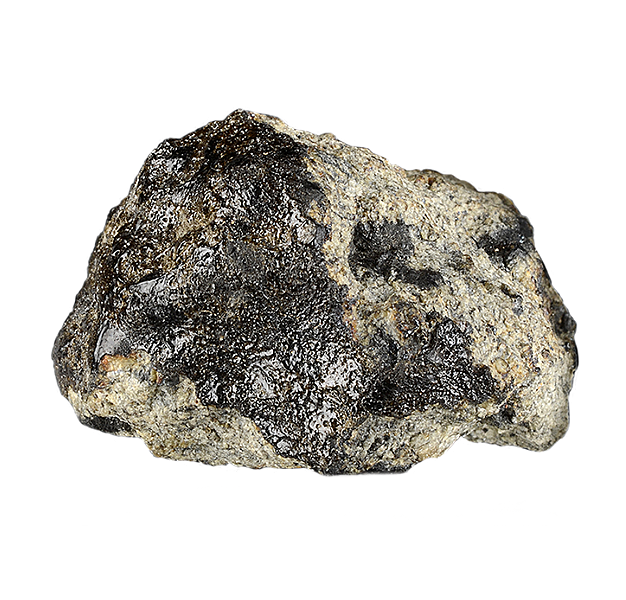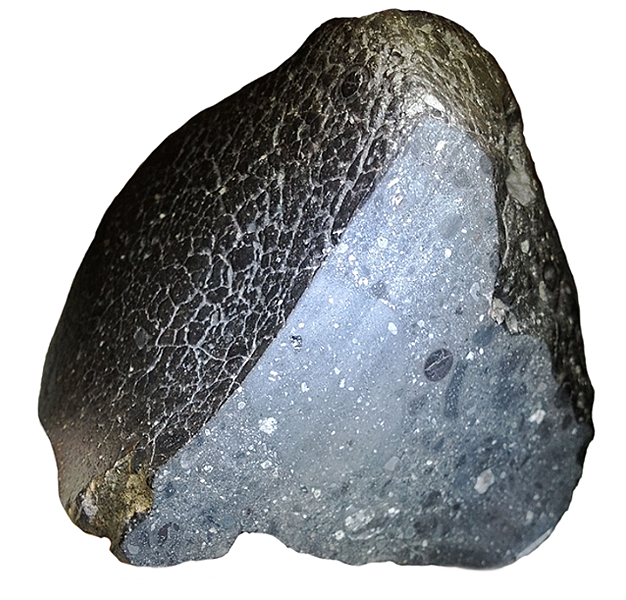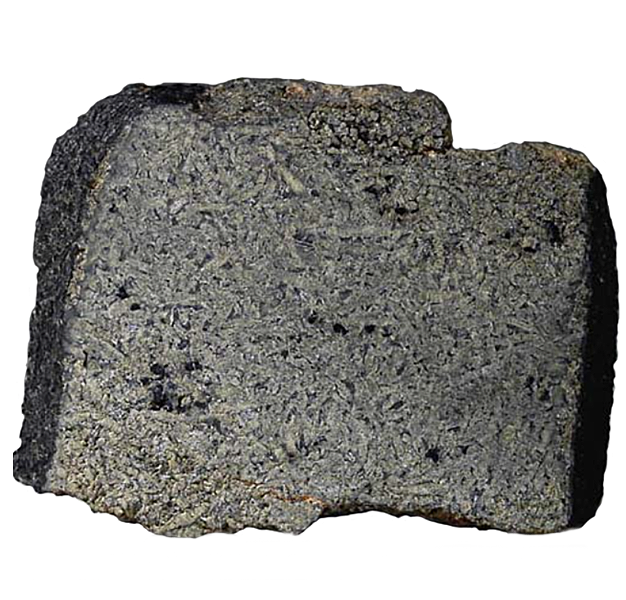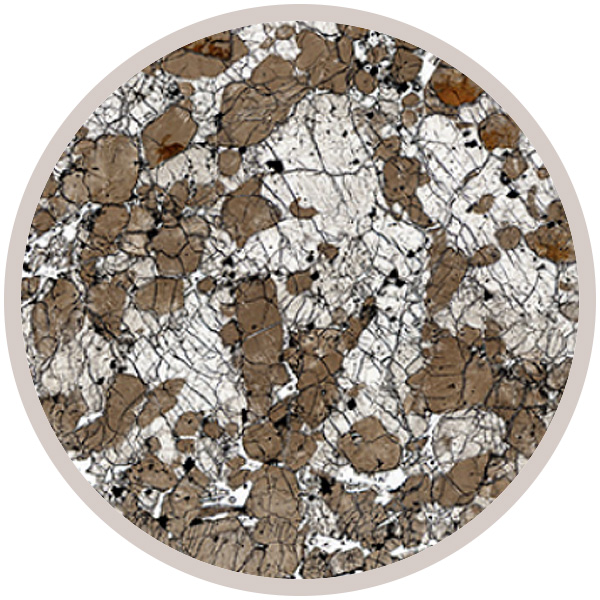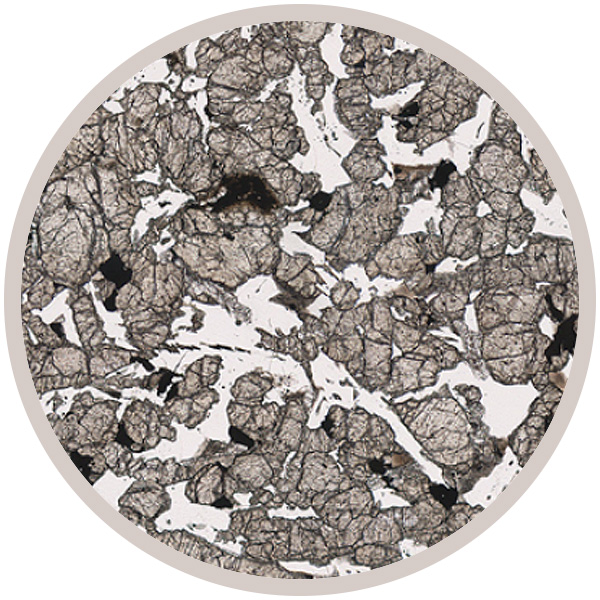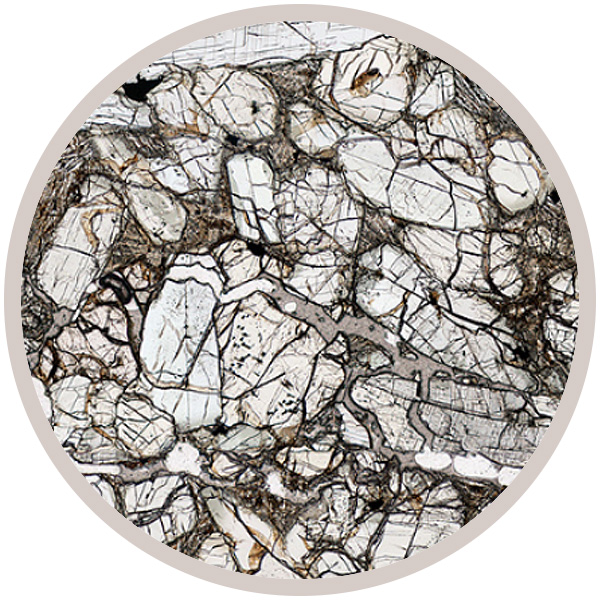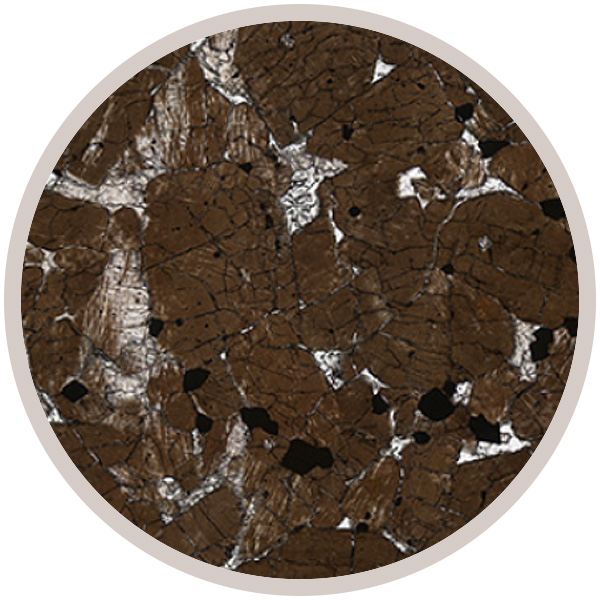
Fact sheet
NWA 2737 was found in several pieces (totaling 611 grams) in 2000 in the Moroccan Sahara and is also known as the “Diderot” meteorite. It originally crystallized 1.38 billion years ago (Sm-Nd age), and was severely shocked about 170 million years ago (Ar-Ar plateau age).
The meteorite mainly consists of olivine (90%) which is unusually black in hand specimen and brown in thin section. These colours are shock-induced. Minor minerals in NWA 2737 are pyroxene (augite and pigeonite) and chromite. Accessory species include alkali feldspar (sanidine), chlorapatite and kaersutite. Calcite and aragonite occur in cracks and interstices between the other minerals. Laihunite (a high density ferric iron-rich variety of olivine) is also reported. Melt inclusions are found in the olivine.
This description draws on the work of NASA scientist Charles Meyer - compiler of The Mars Meteorite Compendium. A pdf document describing NWA 2737 is available.
Note that the thin section was embedded in a mixture of moutnign medium and sand grains to support it while thin sections were cut so the quartz in the periphery of the section is from Earth.
This collection of meteorites includes Shergottites, Nakhlites and Chassignites (or SNC meteorites) which originate from the surface of the planet Mars.
They carry unique signals of the surface of the planet that allows scientists to study the composition and age of Martian rocks. The collection includes a sample of the famous ALH84001 meteorite, evidence from which was used in 1996 to begin the debate of 'life on Mars?'.
Sample details

